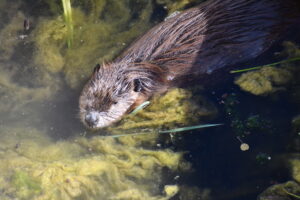While their peers around the Bay Area have been mastering the three R’s, students at the Frank C. Havens School in Piedmont were schooled in the art of “companion planting.”
The garden they planted, known as a “Three Sisters Garden,” makes the most of a popular Thanksgiving dish and Native American agricultural traditions. The fifth-graders planted squash, corn and beans together – known as succotash — in an effort to demonstrate how the plants help each other grow without the need of chemicals and how, when combined, provide complete nutrition.
Before digging, they carefully analyzed the water demand of the crops and determined the most effective way to provide drip irrigation. After carefully observing and tending the crops, the students said they harvested “a huge jungle of Heritage corn,” squash and beans. They composted all unused plant material, a lesson they’ve taken to their homes.
“Now I try to compost at home,” said student Madeline Malan. “We didn’t before, because my Mom thought it smells bad, but now we have a compost bin on the porch.”
Armed with a stack of index cards containing detailed scientific information, fifth-graders Malan and fellow student Rachel Elliott explained how “three sisters” planting works. The corn provides a stalk, a natural pole upon which the beans grow. The squash leaves shade the soil, retain water in the soil, and prevent the incursion of weeds. And a naturally occurring bacteria in the beans absorbs nitrogen from the air, transforms it into nitrates, and fertilizes the soil.
Elliott said the squash vines are covered in hairs, so they help prevent pests from snacking on the crops. Scientists concur that this type of intercropping lends itself to organic agriculture because the plant species are able to attract a more diverse set of guardian species, such as spiders or wasps. All three plants receive greater protection than they would if they were planted solo.
The students continued that the corn supplies carbohydrates, the beans supply protein and the squash supplies vitamins, especially A and C.
These students now share wisdom that is between 5,000 and 10,000 years old, when the Three Sisters were first cultivated in Meso-America. As the practice spreads and continues, it still affects the foods we eat. Succotash, a popular dish for Thanksgiving in New England, derives from the Narragansett msíckquatash meaning, “boiled whole-kernel corn.”
Like the Three Sisters of Native American mythology, these ingredients complement one another, and do best when accompanying one another. There are many variations on succotash.
To read more about the students, check out their article online.

.jpg)



